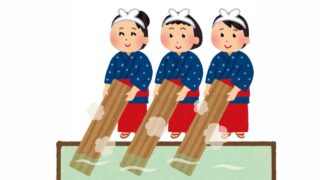The Dominance of Chinese and South Korean Women in Japanese Golf
In recent years, Chinese and South Korean women golfers have been making a significant impact on the Japanese golf scene. It’s not uncommon to see them consistently placing high in tournaments and vying for victories. Several factors contribute to their success:
1. Robust Golf Infrastructure in Their Home Countries
China and South Korea have strong national support systems for women’s golf. The governments actively invest in identifying and nurturing talented young golfers, providing them with the necessary resources to excel on the international stage. Additionally, well-established golf academies in these countries offer aspiring players access to high-quality training facilities and coaching.
2. Influential Role Models
Trailblazers like Chun In-gee and Shin Ji-yai from South Korea, and Feng Shanshan from China, have greatly influenced the younger generation of women golfers in their respective countries. Their achievements on the global stage have inspired many young women to take up the sport and follow in their footsteps.
3. Benefits to the Japanese Golf Scene
The Japanese women’s golf community has embraced the participation of Chinese and South Korean players. Their presence not only elevates the level of competition but also attracts increased attention to the tournaments. The success of foreign players has captivated Japanese golf fans and contributed to the overall popularity and growth of women’s golf in Japan.
The Contrast with Men’s Golf
In contrast to the women’s game, the presence of Chinese and South Korean players in Japanese men’s golf is less prominent. Several factors contribute to this disparity:
1. Larger Global Talent Pool
Men’s golf has a significantly larger global talent pool compared to women’s golf. With fierce competition from skilled players from various countries, it becomes more challenging for Chinese and South Korean male golfers to consistently outperform their rivals.
2. Different Golfing Cultures
Golf has a long-standing history and deeply rooted culture in Western countries, particularly in men’s golf. In comparison, China and South Korea have a relatively shorter golfing history, and the same cultural backdrop for men’s golf is not as prevalent. This difference may influence the development and support for male golfers in these countries.
3. Prize Money Disparity
The prize money in Japanese men’s golf tournaments tends to be lower compared to women’s events. This disparity in financial incentives may affect the motivation of foreign male players to participate in Japanese tournaments.
Conclusion
The success of Chinese and South Korean women golfers in Japan can be attributed to the robust golf infrastructure in their home countries, the influence of successful role models, and the benefits they bring to the Japanese golf scene. In contrast, the men’s game faces different challenges, such as a larger global talent pool, different golfing cultures, and disparities in prize money.
As globalization continues to shape the world of golf, it will be interesting to observe how the Japanese golf landscape evolves. The presence of talented Chinese and South Korean women golfers may contribute to the overall growth and development of golf in Japan.




















